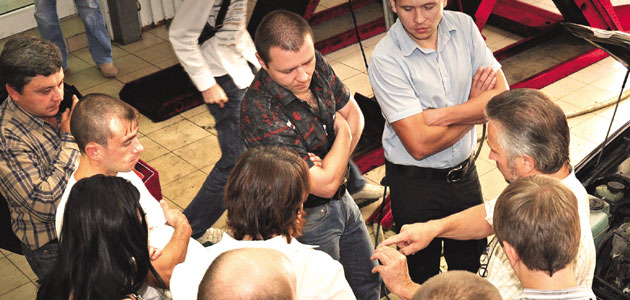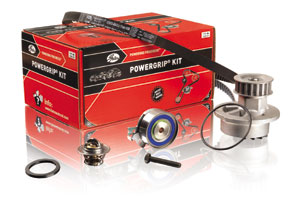
A scenario that will sound familiar to most garage technicians is when a customer reports that, when in traffic, the temperature gauge rises into the red danger zone. A failed thermostat is confirmed as the cause. It’s a problem that could lead to severe engine damage and, usually, it’s a straightforward repair job that won’t break the bank.
For drivers of certain VW group applications (fitted with V6 engines) and some Vauxhall/Opel Group models (fitted with 4 cylinder engines) the cost of the repair can be a lot more expensive. That’s because in these engines, the thermostat sits directly behind the Synchronous Belt Drive System (SBDS) or timing belt assembly. It means that in order to fit a replacement thermostat, the drive belt must be removed.
Examples of VW group applications with such a configuration include the Audi A4 2.4 (Petrol), Audi A4 Cabrio 2.4 (Petrol) & 2.5 (Diesel), Audi A6 2.4 (Petrol) and Audi A8 2.8 (Petrol). Vauxhall/Opel models with similar layouts are the Astra 1.6 and 1.4 (Petrol) and the Corsa 1.2 and 1.4 (Petrol).

Overhaul procedure
Gates advises that if the thermostat on any one of these vehicles fails ahead of a scheduled SBDS overhaul, you should consider bringing the overhaul procedure forward. It is not just good engineering practice, it makes sound economic sense.
Most experienced drive system installers accept that a used timing belt must not be refitted. This is because the correct ‘installation tension’ only ever occurs once – at the point of installation on a cold engine. These parameters are set when the engine is on the OE assembly line.
Installation tension is a critical aspect with respect to overall engine performance and it can only be achieved with a new belt. Most installers also accept that it makes little sense to install new belts without fitting new tensioners and it’s also a good opportunity to replace the water pump (where fitted) in order to ensure that a subsequent leak will not compromise the integrity of the new drive.
For this reason Gates introduced its Kit Plus Water Pump range in 2005. It was a move that gave installers – and their customers – peace of mind. Installers can be sure that the correct water pump is always being supplied. Customers are reassured that in the event of a problem, only one warranty inspection is required because the water pump, belt and tensioner is from a single source.
Kit’s the business The supplier’s latest initiative is a kit designed to resolve the situation that technicians might face when vehicles with a thermostat located behind the SBDS arrive on the garage forecourt.
The supplier’s latest initiative is a kit designed to resolve the situation that technicians might face when vehicles with a thermostat located behind the SBDS arrive on the garage forecourt.
Available from this month, the range of ten PowerGrip® Kit Plus Water Pump Plus Thermostat kits also include all of the appropriate seals and gaskets. The initiative fits perfectly with the Gates principle that overhaul, as part of a preventive maintenance approach, is a better investment than a series of piecemeal repairs.
As the cost of replacing the thermostat on these models is relatively small in comparison with replacing the timing belt and its associated tensioners, the new kits provide a cost-effective solution.









